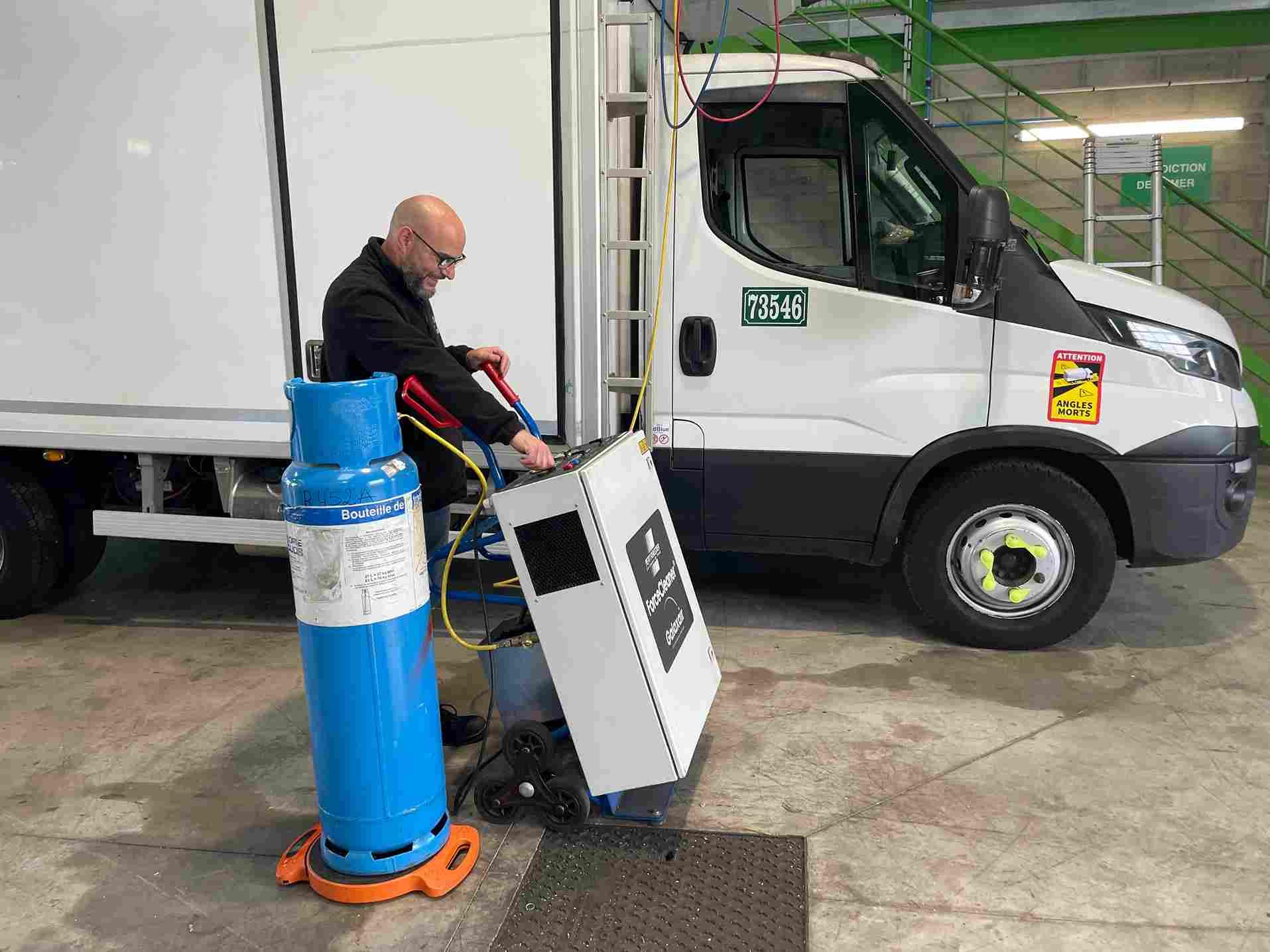Recycling of refrigerant fluids
Could you introduce yourselves in a few lines?
Frederic Vannson: I am the Director of Institutional Relations. My role is to represent the company in various institutions and professional associations, advocating for the company on issues of technical and regulatory developments.
Marc Chabrillat: I am a Technical Advisor for After-Sales Service in the Refrigeration section of Petit Forestier Group. My role is to implement, supervise, and provide advice to each country to ensure they take the necessary actions to comply with regulations.
Petit Forestier Group aims to become the global leader in sustainable refrigerated rental solutions. How do you contribute to this?
Frederic: We are very active on regulatory matters. Our ultimate goal is to support the ecological and energy transition. As a leader, we must be present and actively contribute to this transition
What is the purpose of a refrigerant fluid, and how is the recovery of these fluids currently handled?
Frederic: Refrigerant fluid is contained within a refrigeration unit. It is a chemical product with many advantages, the main one being that it allows the cooling of an environment. However, it also has some drawbacks. The major disadvantage is that the type of fluids used currently generates greenhouse gases in case of a leak. These fluids have a high carbon footprint.
Marc: Current regulations require us to recover our refrigerant fluids. We must have the necessary equipment in our workshops for such operations. We are also required to provide administrative documentation each year regarding this fluid recovery. This ensures that all our flows are properly tracked and that used fluids are correctly processed, preventing them from being released into the atmosphere.
Frederic: We have a systematic obligation to recover the fluid, and then we have several options: we can either recycle and reuse it, regenerate* it, or destroy it if it is a banned fluid or too degraded to be recycled.

What choice has Petit Forestier Group made?
Frederic: We chose to recycle and reuse the refrigerant fluid whenever possible. This choice allows us to minimize our carbon footprint, as well as that of our clients.
Marc: Since 2018, we have invested in dedicated machines that allow us to recover and clean the fluids for reuse. This way, we avoid systematically using new fluid. From 2018 to 2024, we have increased the number of machines from 80 to 103, deployed across one-third of our branches. One machine can cover the needs of several branches.
Frederic: This aligns with the Group's strategy to embrace a more circular economic model. It helps reduce our carbon footprint, as well as that of our clients when using our equipment. Overall, the majority of our countries are equipped with these machines, and their use varies depending on the technical maturity level of each country.
Is this choice solely environmental?
Frederic: This choice is both environmental and economic. Indeed, we have observed an increase in gas prices for several years. That's why we decided to recycle and reuse in order to control our investments.
What are Petit Forestier Group's tangible results in refrigerant recycling?
Marc: Petit Forestier Group has recycled a little over 40 tons of refrigerant since 2018, which represents the avoidance of emitting 19,000 tons of CO₂ through new refrigerant usage.
Frederic: The data from each of our operations is reported to the European Commission. This is important because this data helps legislators adjust the laws.
What are the upcoming actions to meet new regulations on refrigerants and anticipate future challenges?
Frederic: New regulations are being implemented with the F-GAS** directive, which regulates high global warming potential refrigerants with reduction targets by 2030.
Future refrigerants will either be blends of current refrigerants with natural fluids or entirely natural fluids. The challenge is to anticipate these changes by testing equipment adapted to future regulations now and rethinking our working methods for 2030.
Marc: For future actions, we have two levers: working with our suppliers and manufacturers to provide refrigeration units using less polluting refrigerants. We are testing new technologies and machines that contribute to reducing our carbon footprint.
The second lever is investing in new recycling machines. The goal is to install new automated, more ergonomic machines that will increase the capacity for refrigerant recycling and optimize the work of our teams.
And what about natural refrigerants?
Frederic: Almost all of our vehicles are already equipped with ATP** certification. As soon as the tests are conclusive and we have ATP certifications for natural refrigerants, we will be ready to adopt them.
Marc: Furthermore, the future refrigeration units we will use will incorporate technologies specifically designed to operate with natural refrigerants, paving the way for even more environmentally friendly solutions.
Notes:
*Regenerating a refrigerant: This is a complex and costly chemical process that restores a refrigerant to the exact state it was in when originally produced. It can only be performed by industrial chemists. Recycling, on the other hand, involves cleaning the refrigerant using a dedicated machine, and can be done internally. It is allowed by regulations and allows us to be autonomous and agile with controlled costs.
**F-GAS: This regulation governs, at the European level, the types of refrigerants that can be used, their quantities, allocated quotas, and obligations related to training, traceability, and company certification. It specifically regulates the most harmful refrigerants and aims to eliminate a significant portion of the older refrigerants that contribute most to greenhouse gas emissions.
*** ATP is a regulation for refrigerated road transport, signed by nearly 50 countries, which sets standards for vehicles transporting perishable goods.